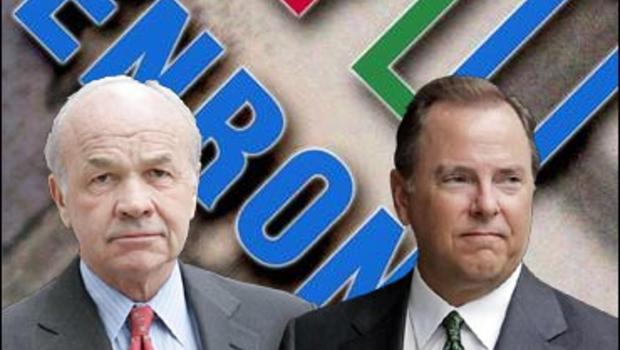 This WSJ ($) article reports ominously that the U.S. trade deficit widened by over $100 billion last year to $726 billion from $618 billion in 2004.
This WSJ ($) article reports ominously that the U.S. trade deficit widened by over $100 billion last year to $726 billion from $618 billion in 2004.
In this TCS Central article, Don Boudreaux lucidly explains why we shouldn’t worry much about it.
A far greater problem than the trade deficit is the widespread misunderstanding of it that often results in demagogic appeals for counterproductive protectionist policies.
Daily Archives: February 10, 2006
End of the line for the talented Mr. Munitz
 Following on earlier posts here, here and here addressed the mercurial career and current troubles of former University of Houston president and current Getty Trust president Barry J. Munitz, this NY Times article (LA Times article here) reports that Munitz resigned under pressure yesterday amid growing questions about his personal use of the trust’s money and resources.
Following on earlier posts here, here and here addressed the mercurial career and current troubles of former University of Houston president and current Getty Trust president Barry J. Munitz, this NY Times article (LA Times article here) reports that Munitz resigned under pressure yesterday amid growing questions about his personal use of the trust’s money and resources.
As a part of his resignation deal with the trust, Munitz will not receive a severance package and he will be required to repay the trust $250,000, which is a ballpark estimate of the amount that the trust believes that Munitz improperly charged charged the trust for personal expenses during his eight-year tenure. However, Munitz’s resignation has no direct impact on the California attorney general’s investigation, which apparently is focusing on several instances in which Mr. Munitz used the trust’s money without proper authorization on pet projects that had nothing to do with the trust’s mission.
No word on whether Munitz will keep the lease on the Porsche Cayenne.
Third time a charm?
 The criminal case against former Cendant Corp. Chairman Walter Forbes has now lasted eight years. Yesterday, the second trial against Forbes on charges of securities fraud, conspiracy and two counts of lying to the Securities and Exchange Commission ended in a mistrial (NY Times article here) with the jury deadlocked after 27 days of deliberations. The first trial of Forbes in 2004 also ended in a deadlocked jury.
The criminal case against former Cendant Corp. Chairman Walter Forbes has now lasted eight years. Yesterday, the second trial against Forbes on charges of securities fraud, conspiracy and two counts of lying to the Securities and Exchange Commission ended in a mistrial (NY Times article here) with the jury deadlocked after 27 days of deliberations. The first trial of Forbes in 2004 also ended in a deadlocked jury.
After running a company that merged with another to form Cendant in 1997, Forbes became Cendant’s chairman and heir apparent for the CEO position. But the accounting fraud came to light in 1998 and Cendant’s market cap plummeted by $14 billion in one day, which prompted the indictment against Forbes. Mounting a similar defense to that of former HealthSouth CEO Richard Scrushy, Forbes contended that subordinates betrayed him and then concealed the scheme. One of Forbes’ underlings — Cosmo Corigliano, the chief financial officer of Forbes’ company that was used to form Cendant — copped a plea on conspiracy and fraud charges and was the main government witness against Forbes during the trial.
Lay-Skilling, Week Two
 At the outset of the criminal trial of former key Enron executives Ken Lay and Jeff Skilling, the Enron Task Force prosecutors estimated that it would take nine weeks to put on its case-in-chief against the defendants.
At the outset of the criminal trial of former key Enron executives Ken Lay and Jeff Skilling, the Enron Task Force prosecutors estimated that it would take nine weeks to put on its case-in-chief against the defendants.
Inasmuch as that prediction assumed four days of trial time each week and that the defense would use the same amount of time on cross-examination of each witness as the prosecution used on direct, the prosecution’s prediction effectively meant that the Task Force believed that it could put on its entire case against Lay and Skilling in eighteen days of testimony.
Well, the Task Force’s prediction has pretty well gone by the wayside with its first witness, former Enron investor relations chief, Mark Koenig.
After the Task Force took two-and-a-half days on Koenig’s direct examination, the defense has used the past three-and-a-half days for cross-examination, and it now looks as if Koenig’s testimony will continue for at least another day-and-a-half, which means that the prosecution will not be in a position to present its second witness — former Enron Broadband co-CEO Ken Rice — until next Tuesday afternoon at the earliest.
Next Tuesday marks the beginning of the third week of the trial.
Moreover, when Koenig is finally through testifying, the prosecution will have used over three days of its original 36-day prediction (over 16% of its case-in-chief) on examination of Koenig.
There is no way that the testimony of Koenig — who is primarily a background witness who was not involved in the mechanics of how Enron’s earnings and finances were evaluated — represents over 16% of the prosecution’s case-in-chief.
This is shaping up to be one very long slog.
